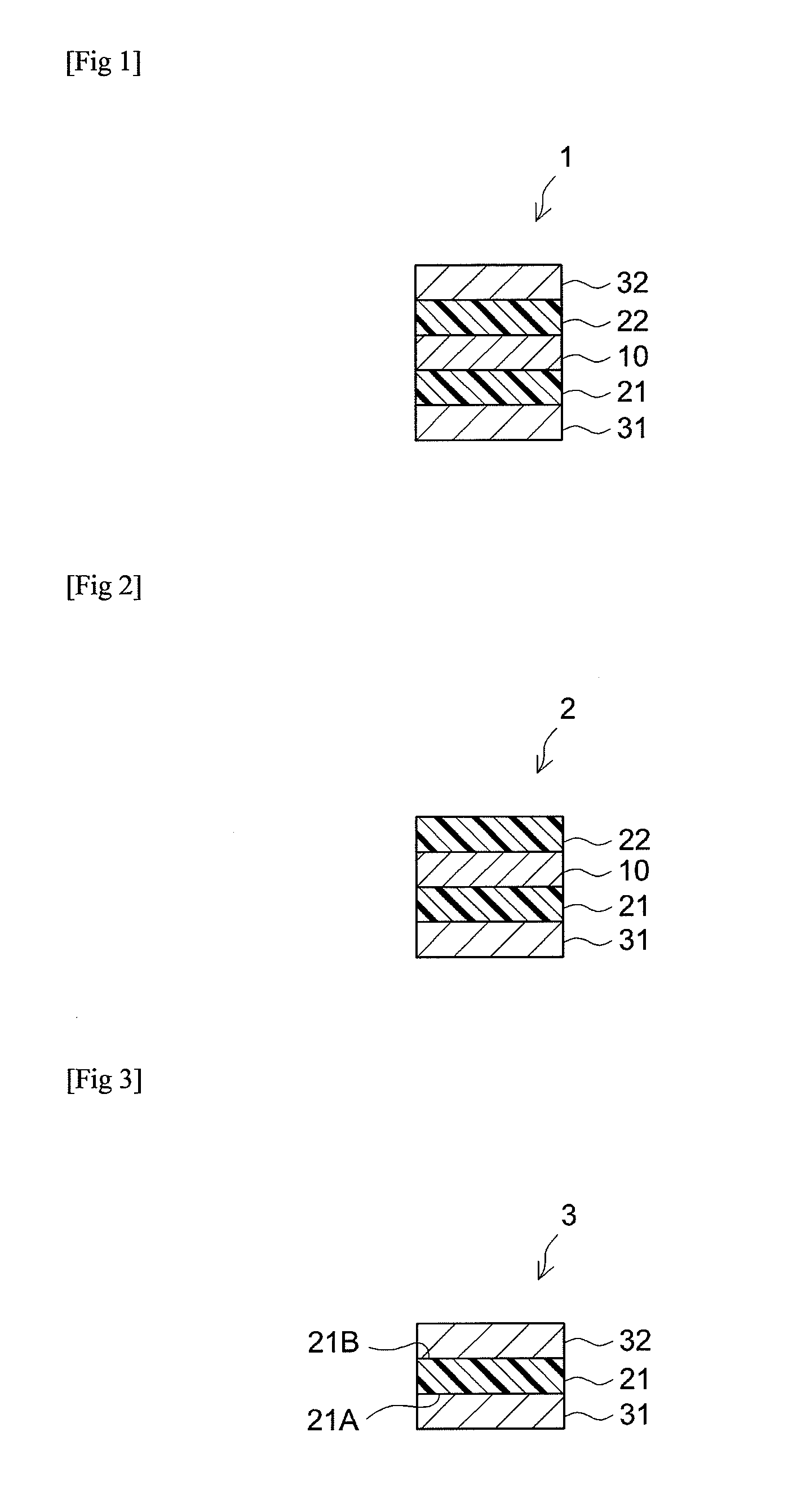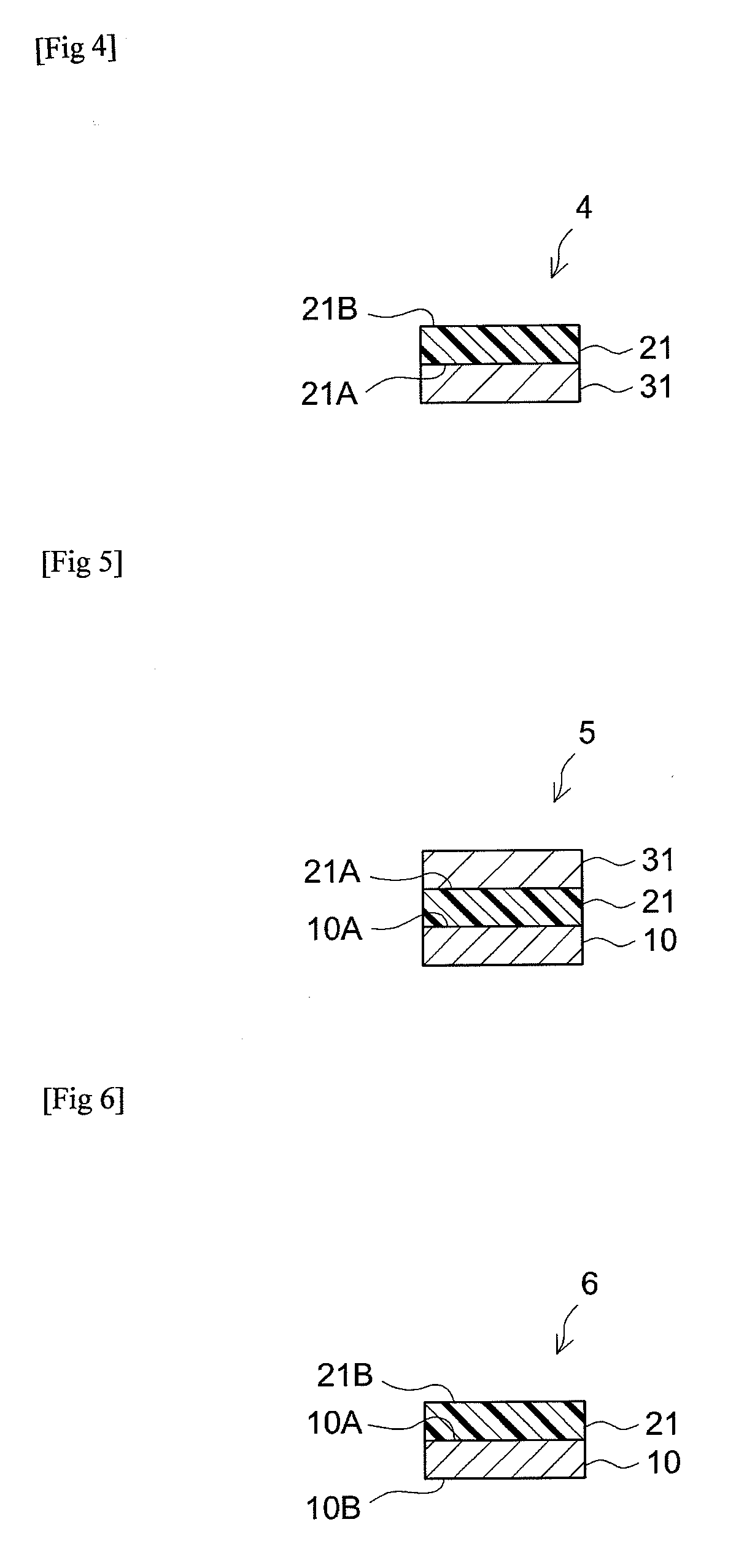Pressure-sensitive adhesive sheet
- Summary
- Abstract
- Description
- Claims
- Application Information
AI Technical Summary
Benefits of technology
Problems solved by technology
Method used
Image
Examples
example 1
[0148]35 parts of ion exchange water were placed in a reaction vessel equipped with a stirrer, thermometer, reflux condenser, dropping device and nitrogen gas feed tube followed by stirring for 1 hour or more at 60° C. while introducing nitrogen gas. 0.1 parts of 2,2′-azobis[N-(2-carboxyethyl)-2-methylpropionamidine]hydrate (Wako Pure Chemical Industries, trade name “VA-057”) were added thereto as a polymerization initiator.
[0149]A monomer starting material was prepared by adding 90 parts of n-butylacrylate (BA), 10 parts of 2-ethylhexyl acrylate (2-EHA), 4 parts of acrylic acid (AA), 2 parts of sodium polyoxyethylene lauryl sulfate (emulsifier) and 0.05 parts of dodecanethiol (chain transfer agent) to 40 parts of ion exchange water and emulsifying.
[0150]This monomer starting material emulsion was gradually dropped into the reaction liquid held at 60° C. over the course of 4 hours followed by emulsification polymerization. Following completion of dropping of the monomer starting mat...
example 2
[0154]A UV-curable, solvent-free silicone-based release agent was coated onto a PE layer of a substrate obtained in the same manner as Example 1 instead of the mixture of release agent and catalyst of Example 1. The amount of the release agent coated was 1.3 g / m2. After coating the release agent, the release agent was irradiated with ultraviolet light under conditions of luminance of 2 W / cm2 and a line speed of 70 m / min using a high-pressure mercury lamp for the light source to cure the release agent and obtain a release liner B.
[0155]A double-sided PSA sheet, provided with a PSA layer composed of a water-dispersed PSA composition, was obtained in the same manner as Example 1 with the exception of using the release liner B instead of the release liner A.
example 3
[0156]A release liner C was obtained in the same manner as Example 1 with the exception of using a general heat-curable, solvent-free silicone-based release agent and a curing catalyst instead of the release agent and curing catalyst of Example 1 and making the coated amount of the release agent 1.5 g / m2.
[0157]A double-sided PSA sheet, provided with a PSA layer composed of a water-dispersed PSA composition, was obtained in the same manner as Example 1 with the exception of using the release liner C instead of the release liner A.
[0158]The release liners A to C and the double-sided PSA sheets obtained in Examples 1 to 3 were measured and evaluated as described below. Those results are shown in Table 1.
[0159][Measurement of Toluene Emission]
[0160]The amount of toluene emission per gram of PSA layer was measured for each of the double-sided PSA sheets of Examples 1 to 3 according to the previously described method.
[0161][Measurement of TVOC Emission]
[0162]The amount of TVOC emission pe...
PUM
| Property | Measurement | Unit |
|---|---|---|
| Temperature | aaaaa | aaaaa |
| Length | aaaaa | aaaaa |
| Mass | aaaaa | aaaaa |
Abstract
Description
Claims
Application Information
 Login to View More
Login to View More - R&D
- Intellectual Property
- Life Sciences
- Materials
- Tech Scout
- Unparalleled Data Quality
- Higher Quality Content
- 60% Fewer Hallucinations
Browse by: Latest US Patents, China's latest patents, Technical Efficacy Thesaurus, Application Domain, Technology Topic, Popular Technical Reports.
© 2025 PatSnap. All rights reserved.Legal|Privacy policy|Modern Slavery Act Transparency Statement|Sitemap|About US| Contact US: help@patsnap.com



